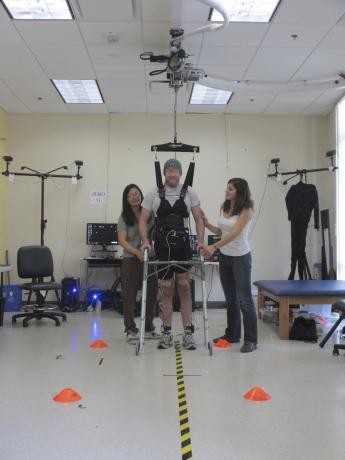A California man has walked a short distance in a bioengineering lab, five years after a motorcycle crash paralyzed him from the waist-down. He learned to walk again by participating in a univeristy experiment in which a computer algorithm translated brain waves into impulses that activated his legs, through bypassing the damaged spinal cord. It was the first-ever event of its kind that did not use robotics.
The study was conducted by the University of California (UCI). It was published in the Journal of NeuroEngineering and Rehabilitation.
ParaplegicAdam Fritz recalls that he had to focus on putting one foot in front of the other one. The high-tech system bypassed the damaged spinal cord of the nervous system.
Fritz told Reuters that the system would not work if he lost concentration. He described his short walk as "exhilarating."
The California man's walk was the first of its kind. It was the first robotics-free walk of a person whose waist-down paralysis resulted from a spinal cord injury, according to Reuters.
Fritz's walk was captured in a YouTube video last October. The clip in UCI's iMove Lab shows a harness and walker helping to support Fritz's weight.
However, researchers explained that his walk was fully controlled by his brain and conducted by his leg muscles. He traveled over 12 feet (3.6 meters).
Fritz explained that taking the steps was not as difficult as stopping. He trained one year by using a virtual reality (VR) simulator in which his brain waves controlled a cartoon character.
Researchers at UCI also used electrodes in Fritz's knees to monitor electrical signals there. This was through an electroencephalogram (EEG) test, according to The Daily Beast.
Co-author Dr. An Do is a neurologist. He shared that brain-to-computer interfaces might help spinal injury and stroke patients in their everyday movements. However, clinical use would be available in years.
This video shows Adam Fritz walking:



























